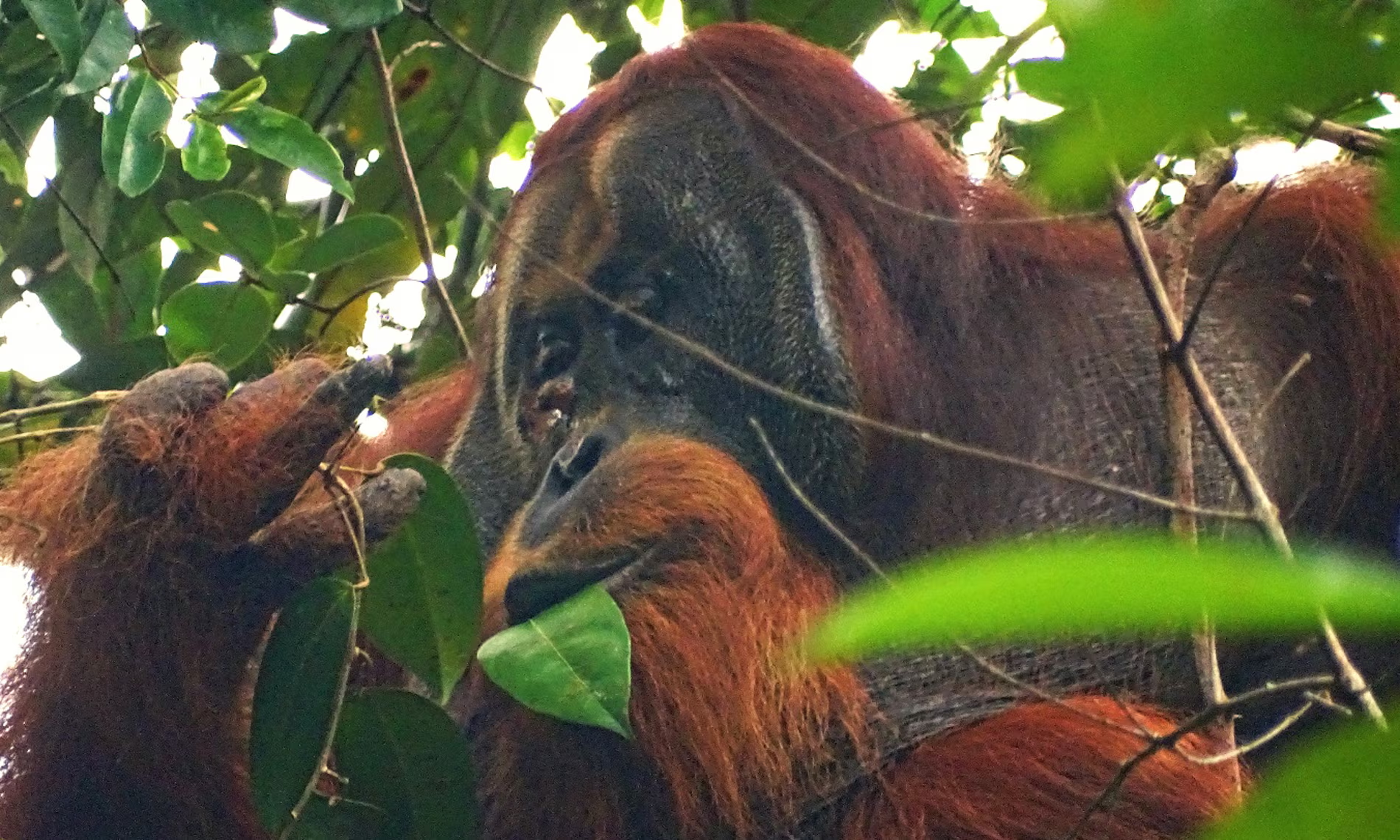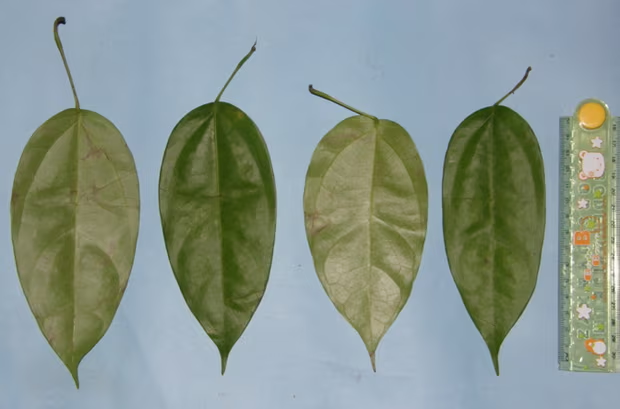[social_warfare]
Ingenious Instincts: The Medical Mastery of Orangutans in the Wild
In the dense, verdant jungles of Sumatra, a remarkable scene unfolds—a Sumatran orangutan, known to researchers as Rakus, tenderly applies a concoction of chewed leaves and sap to a fresh wound on his face.
This isn’t just an incidental act of nature but a calculated move of self-medication, showcasing a level of intelligence and adaptability that blurs the line between human and animal ingenuity.

Researchers at the Max Planck Institute of Animal Behavior in Germany, led by Dr. Caroline Schuppli, have observed Rakus utilizing Fibraurea tinctoria, a plant known for its medicinal properties, to treat his wounds. This specific instance involves Rakus chewing the plant’s leaves, extracting the sap, and meticulously applying it to a facial wound, believed to have been the result of a confrontation with another male orangutan.
Remarkably, after several applications over days, Rakus’s wound visibly healed, leaving behind only a faint scar—a testament to the plant’s efficacy and Rakus’s medicinal prowess.
Dr. Schuppli notes:
“It shows that he, to some extent, has the cognitive capacities that he needs to treat the wound with some medically active plants. But we really don’t know how much he understands.”
This behavior provides a rare glimpse into the cognitive abilities of orangutans, suggesting a deeper understanding and purpose behind their actions.
The concept of wound care is ancient, with human practices dating back to 2200 BC. However, Rakus’s actions hint at these cognitive capacities existing long before humans documented them, suggesting that our last common ancestor with orangutans might have also possessed similar abilities.
This behavioral trait is not isolated to orangutans; other primates and even some birds have shown the ability to utilize natural resources for self-healing, indicating a widespread evolutionary trait across different species.
The implications of these observations are profound. They not only reshape our understanding of primate intelligence but also offer insights into the evolutionary origins of medicinal knowledge. Such behaviors could potentially point to how early humans might have discovered and developed the use of medicinal plants, inspired by observing animals like Rakus.

Reflecting on Rakus’s behavior compels us to consider the deep-rooted connection between all living creatures. It challenges us to rethink how we view animal intelligence, recognizing it not as a hierarchy with humans at the pinnacle but as a spectrum of diverse cognitive abilities.
Conclusion
Rakus’s use of medicinal plants is a window into the soul of the animal kingdom—an intimate portrait of the ingenuity and adaptability that define life on Earth.
As we continue to explore these connections, we may find that the line separating human brilliance from animal instinct is not just blurred but altogether non-existent.
Our challenge now is not just to observe but to learn and, ultimately, to protect those who cannot voice their right to exist.
